LEARN THE MEANING BEHIND THE SYMBOLS
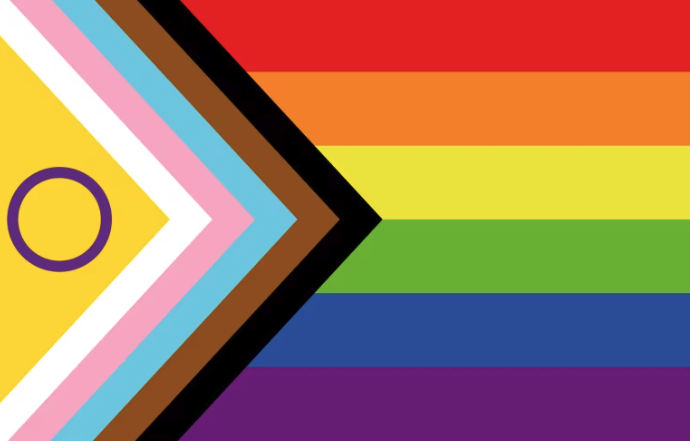
Progress Pride Flag
Inclusion and Progression
Given the evolving nature of the LGBTQIA+ community and society at large, the Progress Pride Flag integrates many of these flags into one. Thankfully, it has been redesigned to place a greater emphasis on “inclusion and progression.”
Daniel Quasar’s flag includes the colors of the trans flag, as well as black and brown stripes harkening back to 2017 Philadelphia Pride Flag, which sought to further represent the queer and trans identities of black and brown people. Those two stripes also represent those living with HIV/AIDS, people who have passed from the virus and the overall stigma surrounding HIV/AIDS that remains today.
In 2021, the Progress Pride Flag was revised by Valentino Vecchietti of Intersex Equality Rights UK to incorporate the intersex flag. In the new design, the chevron of the Progress Flag includes a yellow triangle with a purple circle in the middle.
The New Progress Pride Flag is considered a “universal” flag encompassing the entire LGBTQIAP+ community and is one of the most common flags flown by Hampton Roads Pride since it recognizes the entire community in one symbol.
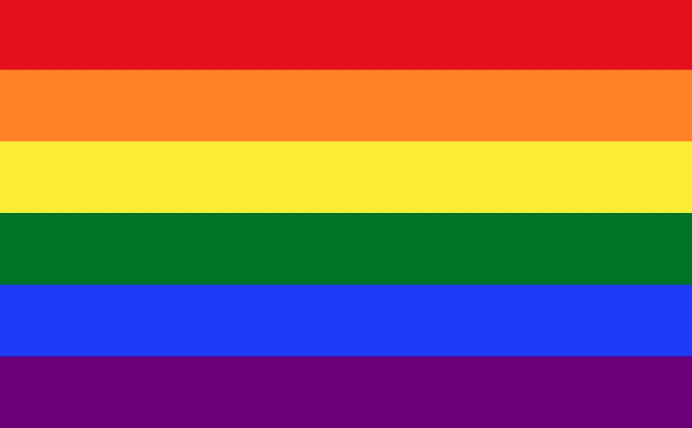
6-Color Pride Flag
Most Well Known
The 6-Color Pride Flag is one of the most well-known and used LGBTQIAP+ flags throughout history. This flag includes the colors red, orange, yellow, green, indigo, and violet on it.
The original Gilbert Baker and Lynn Segerblom flag included eight colors and was designed by request of the first openly gay man elected to public office – Harvey Milk, who was a member of the San Francisco Board of Supervisors. Each of the original eight colors had their own unique symbolism. Hot pink represented sex, red represented life, orange represented healing, yellow represented sunlight, green represented nature, turquoise represented magic and art, indigo represented serenity, and violet represented spirit.
Hot pink wasn't included in the fabrication of the 6-color pride flag because the fabric was hard to find. The demand for the 6-color flag started to rise after the assassination of Harvey Milk on November 27, 1978.
In 1979, the flag was modified again. Aiming to decorate the street lamps along the parade route with hundreds of rainbow banners, Gilbert Baker decided to split the motif in two with an even number of stripes flanking each lamp pole. To achieve this effect, he dropped the turquoise stripe that had been used in the seven-stripe flag. The result was the six-stripe version of the flag that would become the standard for future production.
The remaining colors represent life, healing, sunlight, nature, serenity, and spirit. Beyond the meaning of the the colors themselves, the flag is a symbol of lesbian, gay, bisexual, transgender advocacy.
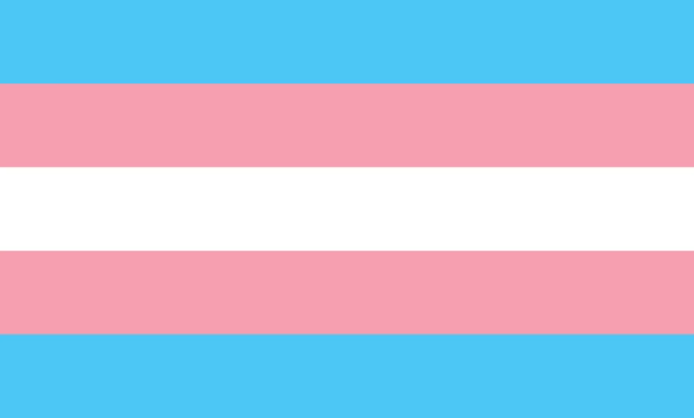
Transgender Flag
Created in 1999 by a transgender woman
The Transgender Flag was first created in 1999 by Monica Helms, a transgender woman. Light blue and pink are featured because they’re the traditional colors associated with baby boys and girls, respectively. The white stands for those who are intersex, transitioning or those who don't feel identified with any gender.
The remaining colors represent life, healing, sunlight, nature, serenity, and spirit. Beyond the meaning of the the colors themselves, the flag is a symbol of lesbian, gay, bisexual, transgender advocacy.
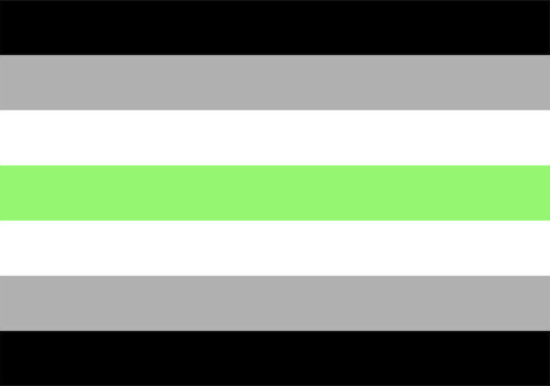
Agender Pride Flag
Created in 2014
The agender pride flag, created by Salem X in 2014, has seven horizontal stripes. The black and white stripes represent an absence of gender, the gray represents semi-genderless, and the central green stripe represents nonbinary genders.
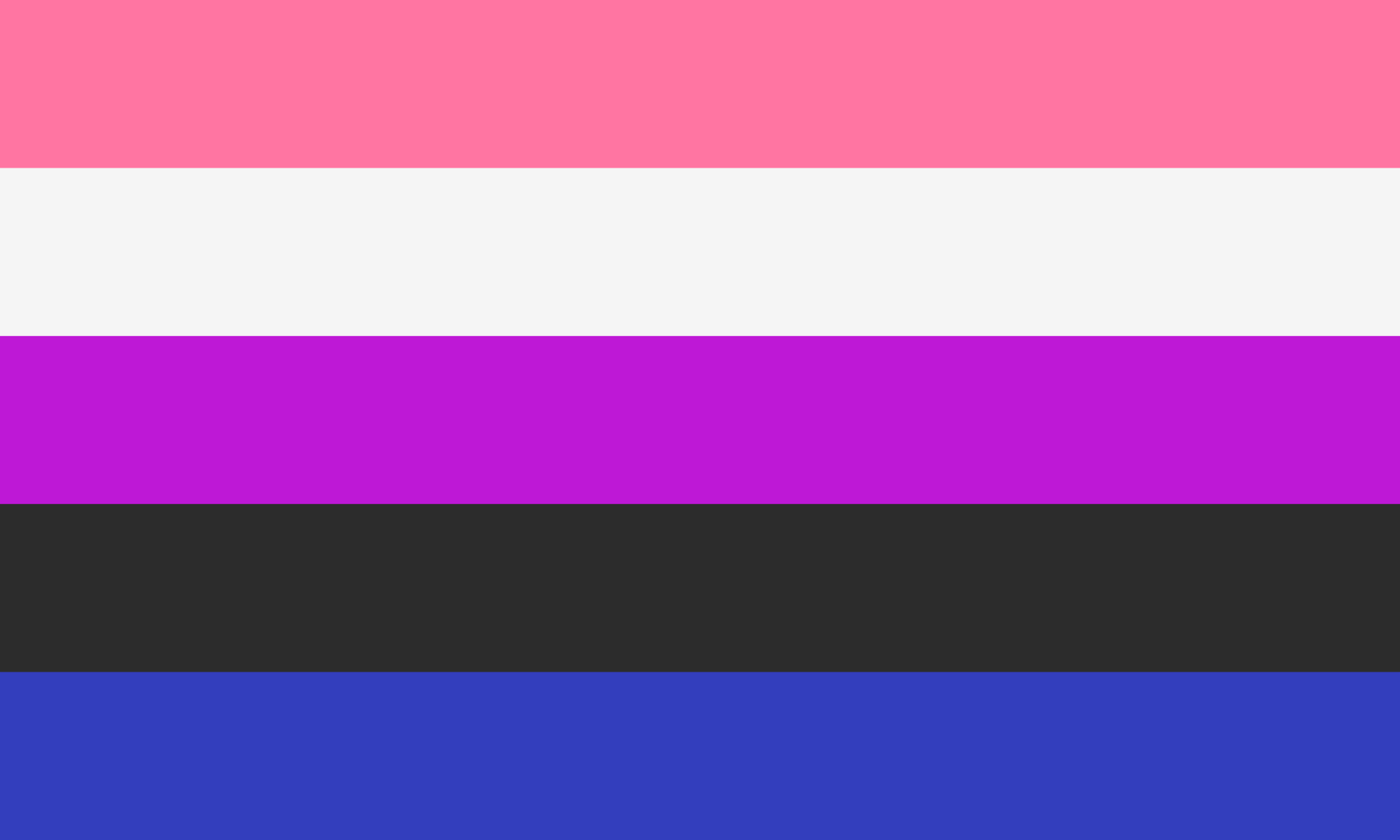
Gender Fluid Pride Flag
Flexible Gender Identity
Gender Fluid people often desire to remain flexible about their gender identity rather than committing to a single definition. They may fluctuate among different gender expressions over thei lifetime or express multiple aspects of various gender markers simultaneously, such as feeling more feminine or masculine, bi-gender or agender, maverique or neutrois, and demigender or polygender. A genderfluid person may also identify as bigender, trigender, or pangender.
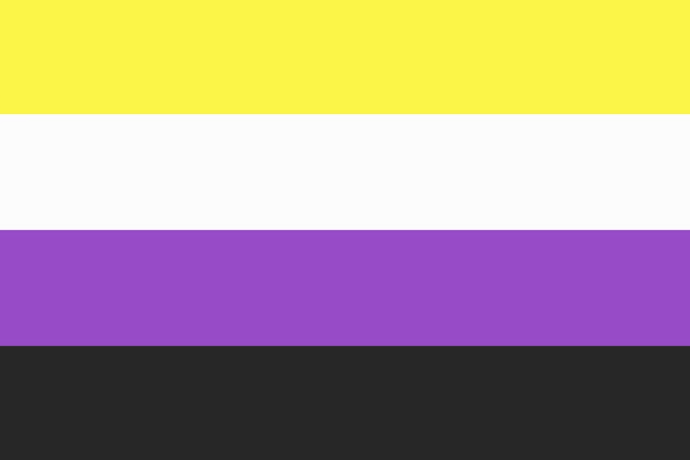
Nonbinary Pride Flag
Non Traditional Gender Expression
In 2014, Kye Rowan created the Nonbinary Pride Flag to represent people whose gender identity does not fit within the traditional male/female binary. The colors of the nonbinary flag are yellow, white, purple, and black. The colors each symbolize a different subgroup of people who identify as nonbinary.
Yellow signifies something on its own or people who identify outside of the cisgender binary of male or female. A cisgender person would be a person whose gender identity matches their sex assigned at birth. White, a color that consists of all colors mixed, stands for multi-gendered people. Purple, like the lavender color in the genderqueer flag, represents people who identify as a blending of male and female genders. Finally, black (the absence of color) signifies those who are agender, who feel they do not have a gender.
Some non-binary/genderqueer people use gender-neutral pronouns. Usage of singular ‘they’, ‘their’ and ‘them’ is the most common.
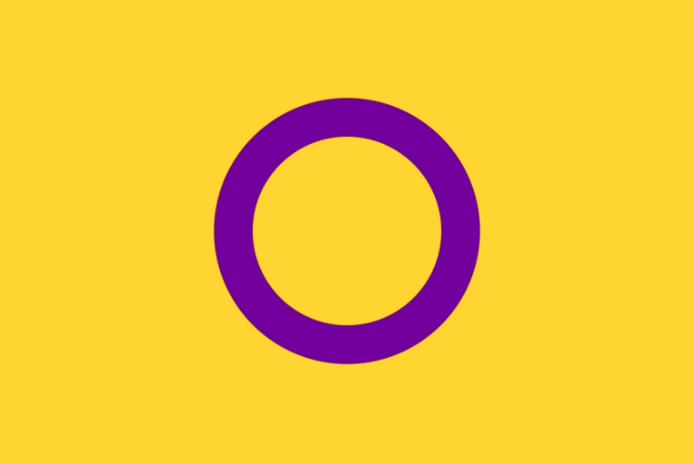
Intersex Pride Flag
People, Perfect the Way they are
This flag went through a variety of iterations before the current Intersex Flag emerged. Previous versions embraced the rainbow that is often associated with queer pride, while others used colors like blue and pink, which are found on the transgender flag.
In 2013, Morgan Carpenter chose the colors yellow and purple for the intersex flag. Morgan moved away from the rainbow symbolism and selected these colors because neither is associated with the social constructs of the gender binary.
The circle, perfect and unbroken, represents the wholeness of intersex people. It is a reminder that intersex people are perfect the way they are or choose to be.
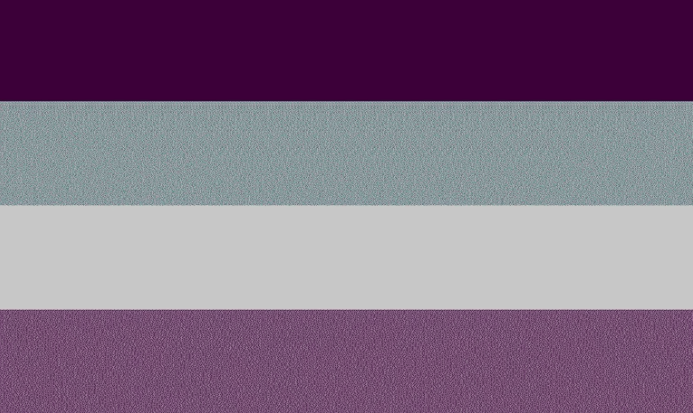
Asexual Pride Flag
Lack of Sexual Attraction
The Flag for the Asexual Community was created in 2010 by the Asexual Visibility and Education Network. Asexual is the lack of sexual attraction to others, or a low interest in sexual activity, but asexuality can mean different things to different people, it is best to ask each individual what it means to them. For some people, it may mean that they rely on other types of attraction instead of or in place of sexual attraction.
Asexual can be an umbrella term and each color in this flag also represents something unique. Black stands for asexuality. Gray represents demisexuality, for those who develop sexual attraction to someone only after forming a deep emotional bond with them. White stands for the allies of the community. Purple represents the entire community of asexual folks.
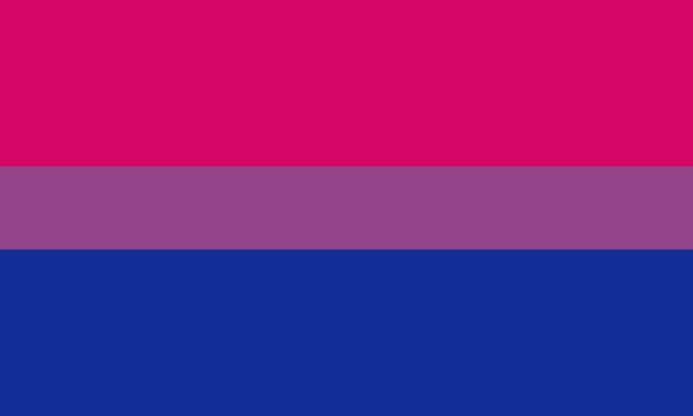
Bisexual Pride Flag
Ability to Blend
The Bisexual Pride Flag was created in 1998 by Michael Page. His idea for the flag represents pink and blue blending to make purple. The way that bisexual people can blend into the straight community and the gay community.
The colors of the flag also represent attraction to different genders. The pink symbolizes attraction to the same gender, while the blue represents attraction to a different gender. The
purple represents attraction to two or more genders, the definition of bisexuality.
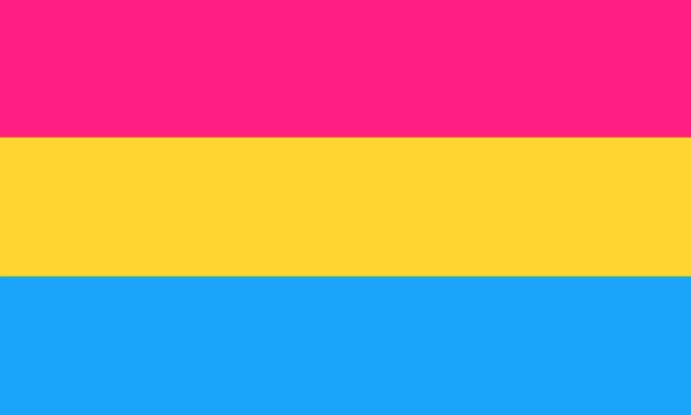
Pansexual Pride Flag
Attraction without Gender
The Pansexual Flag was created in 2010. Pansexuality represents those people who feel attracted to a person without thinking about gender. Pansexual people may refer to
themselves as gender-blind, asserting that gender and sex are not determining factors in their romantic or sexual attraction to others. This means that they can feel attraction to those who identify as women, men, both or neither.
The pink on the flag represents attraction to women, blue represents attraction to men, and yellow stands for attraction to those who don’t identify with either gender.
Pansexuality may be considered a sexual orientation or a branch of bisexuality, to indicate an alternative sexual identity.
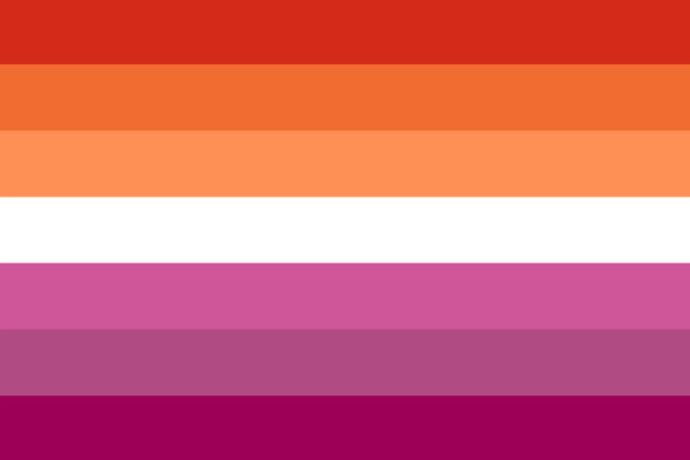
Lesbian Pride Flag
Independence and Womanhood
The Lesbian Flag is one of the flags fewer people know about. This flag features different shades of pink and sometimes comes with a red kiss on it to represent lipstick lesbians.
This flag was created by Natalie McCray in 2010. Some lesbians oppose this flag because of its exclusion of butch lesbians but no other flag has as much popularity as this one.
In the new flag, the colors Darkest Orange represent Gender nonconformity, Middle Orange: Independence, Lightest Orange: Community, White: Unique relationships to womanhood,
Lightest Pink: Serenity and peace, Middle Pink: Love and sex, Darkest Pink: Femininity.

Gender Queer Pride Flag
Lavender, White, and Chartreuse
The Gender Queer pride flag was created by the advocate and genderqueer writer Marilyn Roxie in 2011. The flag has three horizontal stripes: lavender, white, and dark chartreuse green. The lavender, a mix of pink and blue which traditionally represents women and men, expresses queer identities and androgyny. White represents gender-neutral and agender identities. Chartreuse represents identities that aren’t in the gender binary and the third gender.
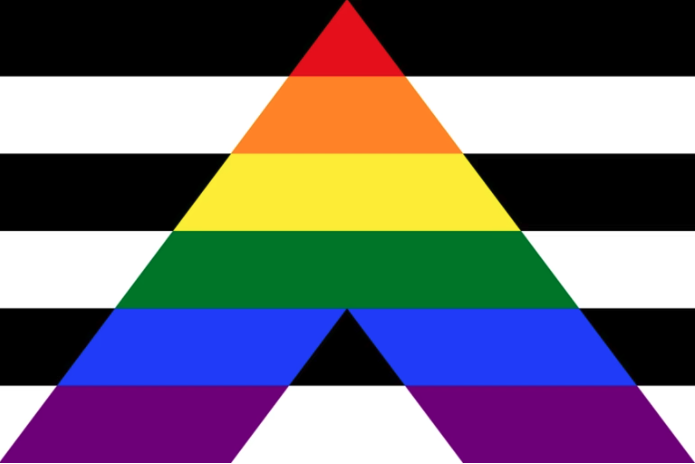
Ally Pride Flag
Support for Equal Marriage
The Ally flag is using the black-white “colors” of the heterosexual flag as a field, it adds a large rainbow colored “A” (for “Ally”) to indicate straight support for the Gay Pride/Equal Marriage movement.
A straight ally or heterosexual ally is a heterosexual and/or cisgender person who supports equal civil rights, gender equality, LGBTQIAP+ social movements, and challenges homophobia, biphobia and transphobia. A straight ally believes that LGBTQIAP+ people face discrimination and thus are socially and economically disadvantaged.
.png?width=1080&height=1080&name=Volunteer%20Solicitation%20(1).png)
Our Mission
Join A Committee
Actively contribute to Hampton Roads Pride by joining one of our committees as a community volunteer. As a committee volunteer, you'll help plan and execute events, engage with the community, and ensure our initiatives are inclusive and impactful.
Ready to Become a Member Leader and Make a Difference?

